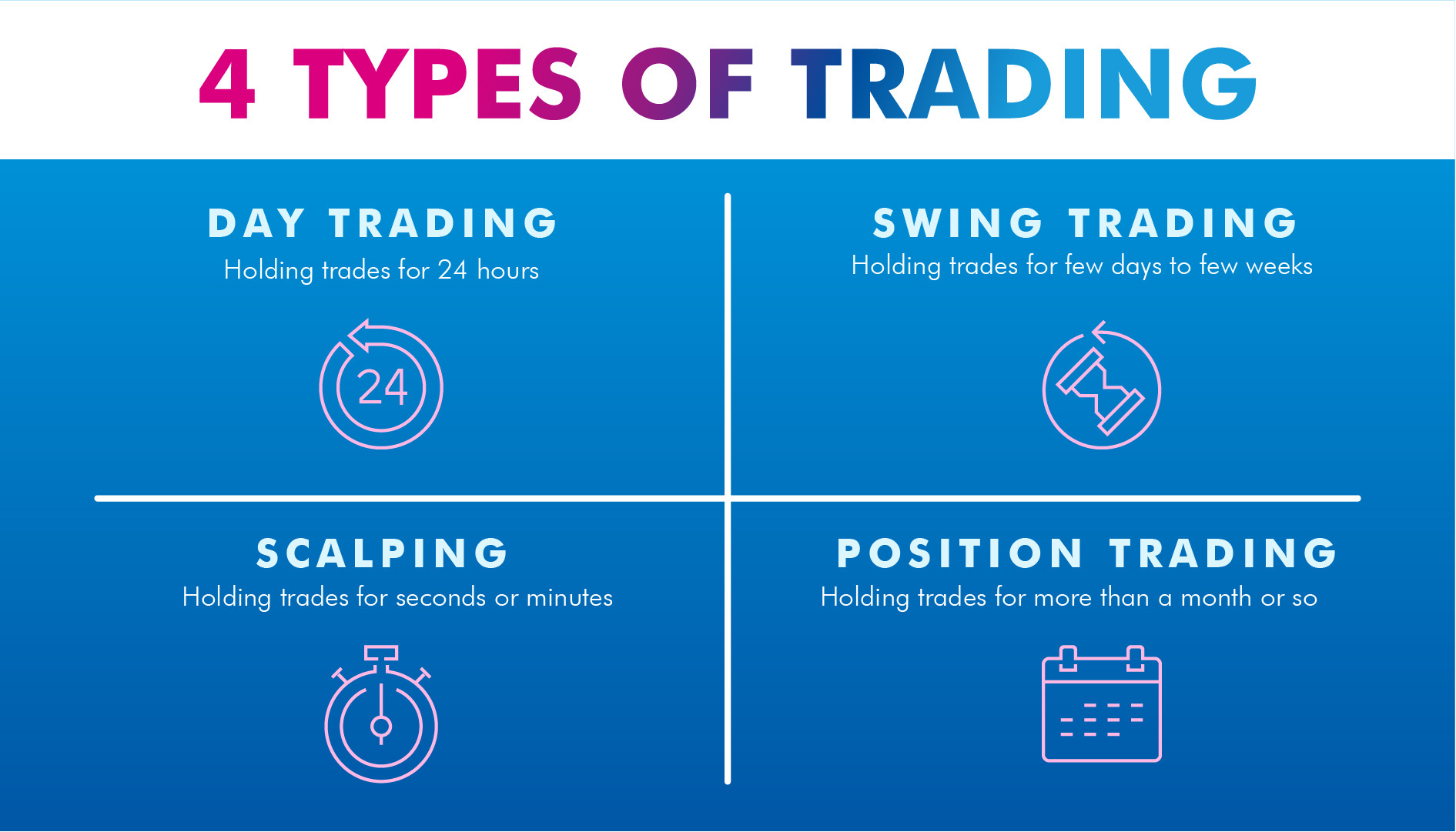How to Start Online Trading for Beginners
16 Mar 2022

Maybe there’s a new bag or a pair of shoes that you wanted to buy, but you realise you don’t have enough money for it. A few days later, you then hear from your cousin that he made a few thousand from online trading.
Sounds easy peasy, doesn’t it? Well, it isn’t. Your cousin, most probably, just got lucky.
As the phrase goes, ‘trading is not for the faint of heart.’ Because the stock market is so volatile, online trading is NOT a guaranteed way to make quick bucks. So as early as now, we’re warning you: Don't take unnecessary risks and never invest what you can’t afford to lose.
However, if you already know the risks involved and still want to learn how to start online trading, we’ll be glad to help you out.
What is online trading?
Online stock trading or online active trading is the act of buying and selling company shares through online platforms. You can say it also is investing your money in the stock market, but the timeframe that traders do the buying and selling generally differ from how investors, especially value investors, do it.
Most of the time, online traders would buy and sell stocks within a short duration of time to maximise the total profits gained. This is why it’s adopted by those who want to make profits from stocks fast.
Yet, don't get the impression that online trading is too straightforward. There are four common types of online trading methods that you should know about if ever you want to use this strategy: day trading, swing trading, scalping, and position trading.
1. Day trading
You start staring at the screens at 9 or 10 a.m. and don’t stop until the market closes. For day traders or those who follow the day trading strategy, this is what everyday life looks like.
As the name suggests, day trading refers to executing trades (buying or selling) during the day. It means you call it a day when you’ve closed all positions.
Day traders hold stocks for a few seconds to maybe a few hours, but never overnight or for more than a day. This strategy aims to reduce the risk of subjecting your stock position to price changes because of sudden overnight announcements.
You should also know that day trading can be not as profitable as it looks like, as the transaction costs from doing several trades or changes in position each day can eat up your profits.
Typically, only professionals do this because small turbulence in the market could affect your profits. Extensive research and foresight are needed if you want to profit through day trading.
2. Swing trading
Swing trading is somehow similar to day trading in the sense that the time frame that swing traders hold their stocks is also short-term. However, in swing trading, positions are held for more than a day. It could be a few days to a few weeks.
Those who do swing trading often hold their positions for more than a day hoping to chance upon critical points to take action. Basically, they capitalise on the “swings” in share prices and want to get profits from small price movements.
In swing trading, you won’t need to stare at the charts for an entire day until the market closes. You only need to monitor your position constantly and look for the best opportunity to act.
3. Scalping
Fast-paced trading as we would call it, scalping involves opening and closing positions within split seconds. Many people tend to say that impatient people make horrible traders. That is not true in this case.
Because scalping requires split-second decisions, once your trade goes the wrong way, you would need to quickly close it to cut losses. Most of the time, this is what impatient people do best.
Scalping is one of the quickest types of trade strategies and since it happens so fast, the profit per trade is not that much. Therefore, if you use scalping, you would prefer a more liquid market to make the most number of trades per day and a less volatile market that won’t have sudden price changes.
4. Position trading
As opposed to the previous trading types, position trading requires you to hold a stock for a long period, often more than a month or so. Hence, this is also sometimes called a buy-and-hold trading strategy. So, if patience is not one of your top virtues, position trading might not be for you.
When position trading, you would be looking at daily to monthly charts to determine patterns or trends in the stock chart – something you can ride on and profit from. Then, you jump at the trend and only exit the position when this same trend dies.
Technically, these 4 types of online trading strategies mainly differ on their position holding time. Below is a summary of these methods.

How can you start online trading?
Finally, you have gotten to the part where you start learning how to start online trading. But you might be unsure of what to expect as everything seems new to you.
Fret not! We are about to let you in on a little secret – you can practise online trading to get some experience first. Yes, you heard that right. You can first start with a paper account to get a feel of what online trading feels like. You can set up a paper account with most of the brokerages, so you should be able to easily open one.
Next, you ought to learn how to research stocks. One of the best places to start is through reading the news, blog articles, and other relevant resources about the stock market. Information can be found anywhere, it’s up to you to look for what you deem significant.
Third, decide which types of trades would be best for you. When buying a stock, you can either choose to place a ‘market order’ or ‘limit order.’ A market order is when you decide to buy the stock at the current market price, while a limit order is choosing a price you’d rather buy it at and see if your order gets filled.
If you’re a beginner, focus on the simple buy and sell strategies first. Don’t force yourself to do anything too advanced.
Complicated trading techniques can include options, which means that you are buying much more than you can afford to generate greater profits and bigger losses. Another example is margin trading, which requires borrowing money to trade stocks.
Many trading strategies can help you make profits in just a short period. However, if you do not know how to use them properly, you can easily lose all your money.
Is online trading not suitable for your goals? Join our free investment bootcamp on value investing instead.
DISCLAIMER
This article and its contents are provided for information purposes only and do not constitute a recommendation to purchase or sell securities of any of the companies or investments herein described. It is not intended to amount to financial advice on which you should rely.
No representations, warranties, or guarantees, whether expressed or implied, made to the contents in the article is accurate, complete, or up-to-date. Past performance is not indicative nor a guarantee of future returns.
We, 8VI Global Pte Ltd, disclaim any responsibility for any liability, loss, or risk or otherwise, which is incurred as a consequence, directly or indirectly, from the use and application of any of the contents of the article.
